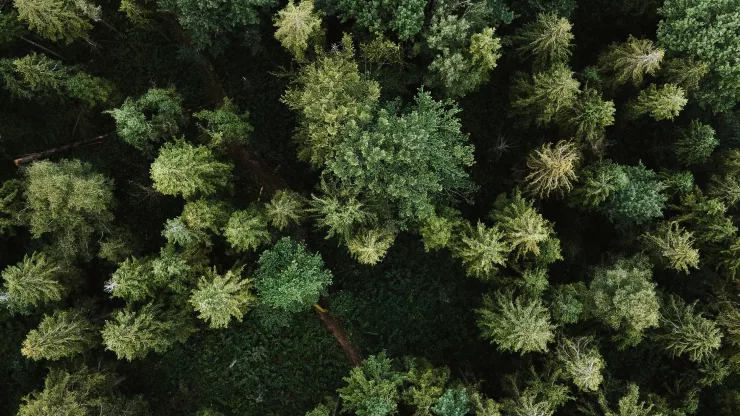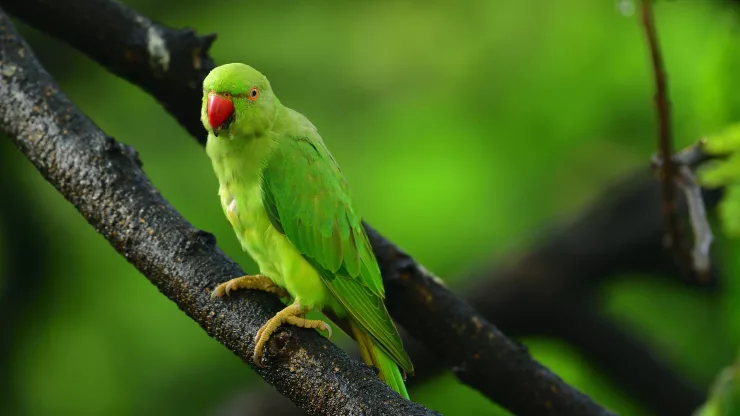Cities can often be associated with concrete jungles and a lack of greenery, but urban wildlife and green spaces have become increasingly important in creating healthy and sustainable cities.
These oases can provide a range of benefits, from improving mental and physical health to attracting businesses and improving air quality.
However, there are challenges to creating and maintaining these green spaces in dense urban areas.
In this article, we will explore the benefits of urban wildlife and green spaces, the challenges to creating them, and the strategies and case studies that showcase successful implementation.
Jump to Section
The Importance of Urban Wildlife and Green Spaces
Urban wildlife and green spaces provide much-needed respite from the hustle and bustle of city life.
They can also provide a range of benefits that contribute to creating healthier and more livable cities.
Some of these benefits include:
Improved Mental and Physical Health
Studies have shown that spending time in green spaces can have a positive impact on mental and physical health.
Exposure to nature has been linked to reduced stress levels, improved mood, and increased physical activity.
Economic Benefits
Green spaces can also have economic benefits for cities. They can increase property values, attract businesses, and create jobs.
Environmental Benefits
Urban wildlife and green spaces can also have a range of environmental benefits.
They can improve air and water quality, reduce the heat island effect, and provide habitat for native species.
Challenges to Creating Urban Wildlife and Green Spaces
While the benefits of urban wildlife and green spaces are clear, there are also challenges to creating and maintaining them in dense urban areas.
Some of these challenges include:
Limited Space
One of the biggest challenges to creating urban wildlife and green spaces is limited space.
Cities can work around this by repurposing unused land, converting parking spaces into green areas, and implementing rooftop gardens.
Funding
Securing funding for green space projects can also be a challenge. Cities can apply for grants, partner with private organizations, and implement crowdfunding campaigns.
Maintenance
Maintaining urban green spaces can also be a challenge.
Cities can overcome this by implementing sustainable design practices, partnering with community organizations, and utilizing technology to streamline maintenance processes.
Strategies for Creating Urban Wildlife and Green Spaces
Despite the challenges, there are a range of strategies that cities can implement to create urban wildlife and green spaces. Some of these strategies include:
Community Gardens
Community gardens can provide green space and opportunities for urban agriculture. They can also bring communities together and promote healthy eating.
Green Roofs and Walls
Green roofs and walls can be used to create green space and improve building efficiency. They can also reduce stormwater runoff and improve air quality.
Pocket Parks
Small, strategically placed parks can provide green space in dense urban areas. They can also provide opportunities for exercise, relaxation, and socialization.
Public-Private Partnerships
Public-private partnerships can be a valuable tool for creating and maintaining urban green spaces. They can provide access to funding, expertise, and resources.
Wildlife Corridors
Wildlife corridors can be used to connect urban green spaces and provide habitat for urban wildlife.
They can also promote biodiversity and ecological resilience.
Case Studies
There are a range of successful case studies that showcase the implementation of urban wildlife and green spaces in cities. Some of these case studies include:
Central Park, New York City
Central Park is one of the most iconic urban green spaces in the world.
It was designed in the mid-19th century and has since become a beloved destination for New Yorkers and tourists alike.
Millennium Park, Chicago
Millennium Park is located in the heart of downtown Chicago and was created on a former industrial site.
It has become a cultural destination and a model for urban green space development.
High Line, New York City
The High Line is a unique urban green space that was created on an abandoned elevated railway.
It has since become a popular destination for tourists and locals alike.
Conclusion: Building Sustainable and Livable Cities
Urban wildlife and green spaces are vital components of healthy and sustainable cities.
They provide a range of benefits, from improving mental and physical health to promoting economic development and environmental sustainability.
While there are challenges to creating and maintaining these green spaces, there are also strategies and case studies that showcase successful implementation.
By working together, cities can create oases in the midst of concrete jungles and build sustainable and livable communities.
FAQ
What are some benefits of urban wildlife and green spaces?
Urban wildlife and green spaces can provide a range of benefits, including improved mental and physical health, economic development, and environmental sustainability.
What are some challenges to creating urban wildlife and green spaces?
Some challenges to creating urban wildlife and green spaces include limited space, funding, and maintenance.
What are some strategies for creating urban wildlife and green spaces?
Strategies for creating urban wildlife and green spaces include community gardens, green roofs and walls, pocket parks, public-private partnerships, and wildlife corridors.
What are some successful case studies of urban wildlife and green spaces?
Successful case studies of urban wildlife and green spaces include Central Park in New York City, Millennium Park in Chicago, and the High Line in New York City.
I’m a nature enthusiast and creator of Metro Wilds and have spent years exploring the great outdoors.
With a passion for environmental conservation and sustainability, I have dedicated my career to writing about the beauty and wonders of nature, as well as the threats facing our planet.
Contact me at [email protected] for assistance.





